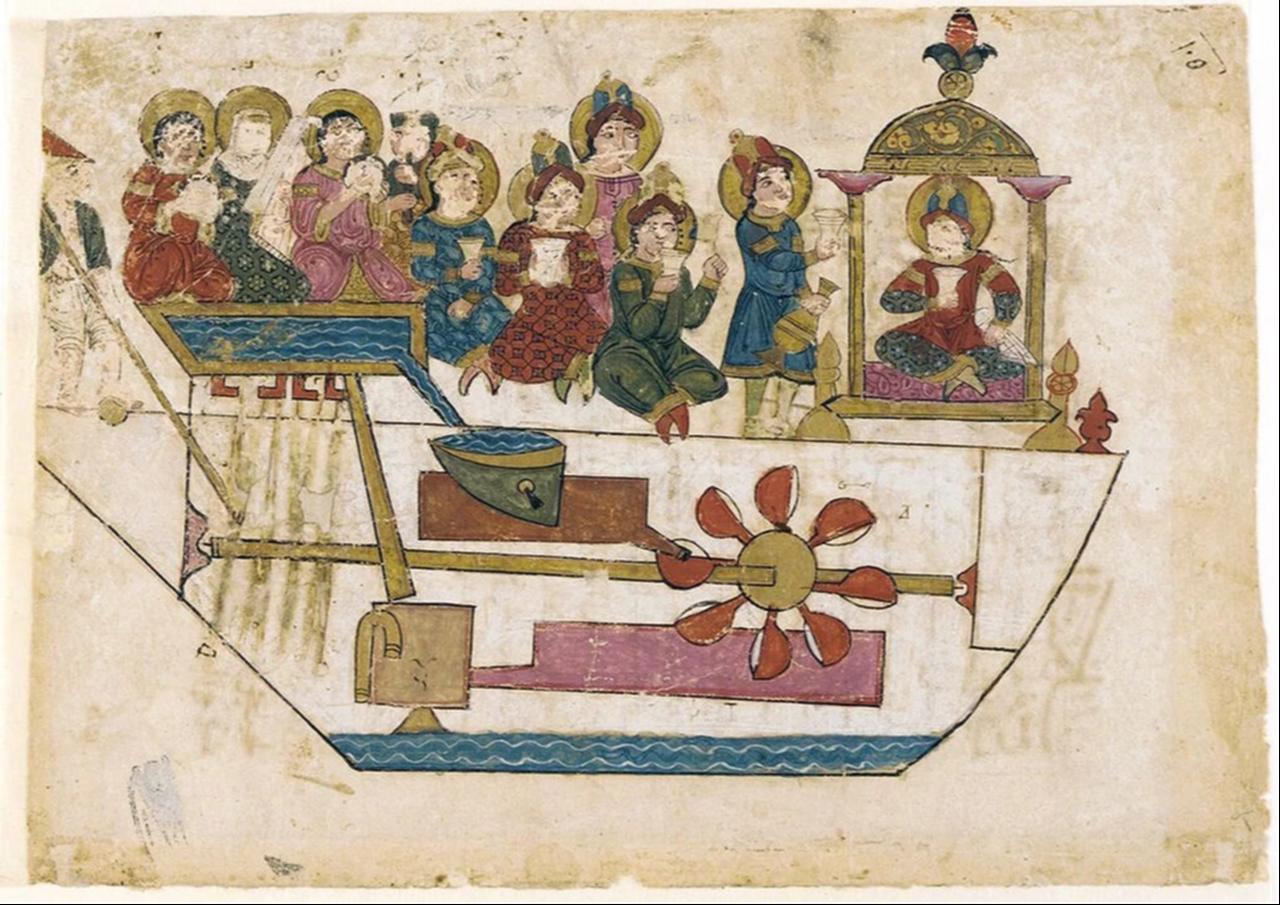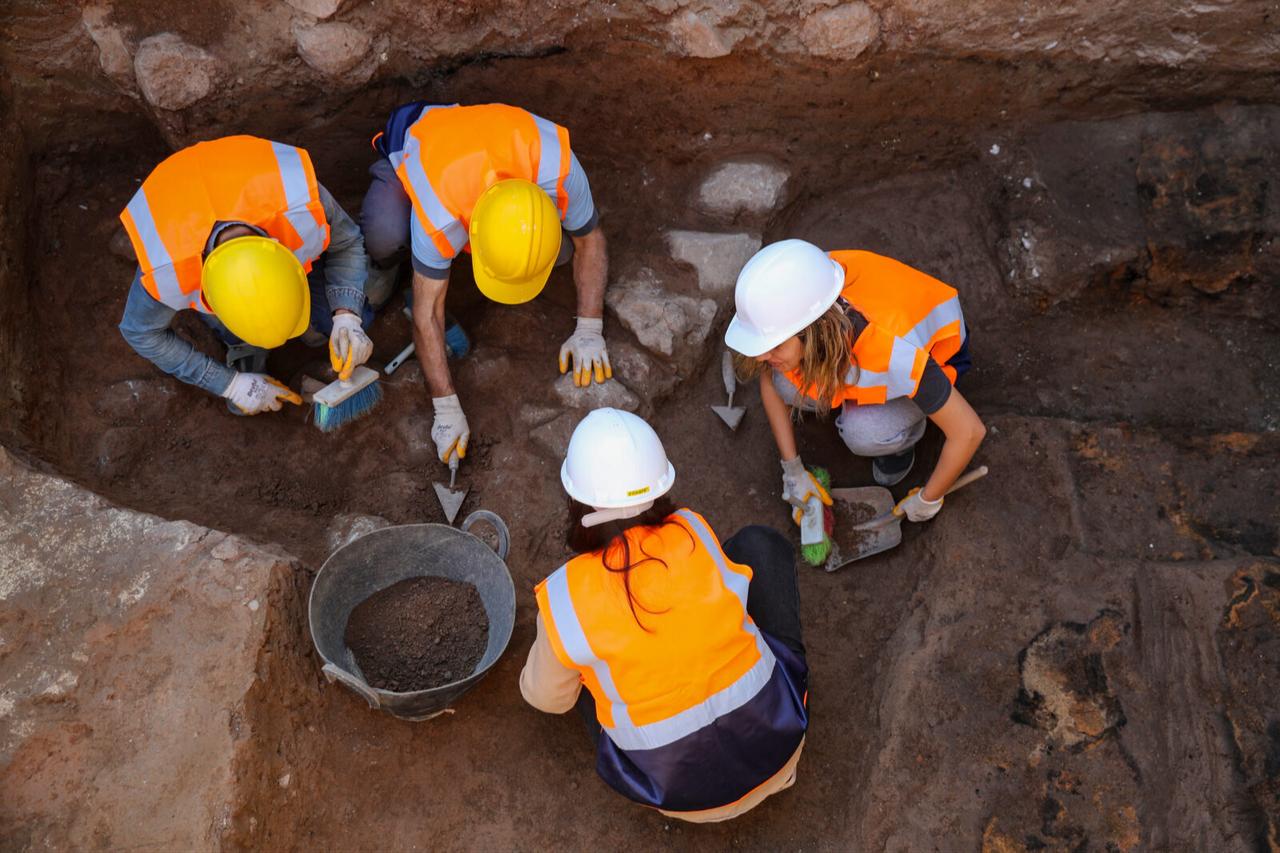
When you climb the hill beside the historic fortress of Diyarbakir, all of Mesopotamia stretches out before your eyes in full splendor.
This hill, known as “Amida Hoyuk,” is the world’s second-oldest continuously inhabited settlement, where life has continued without interruption for 10,000 years. With this feature, it even overshadows Gobeklitepe.
Another distinguishing aspect of the mound is that it is the place where the world’s first robots were made—and, moreover, used! The Muslim scientist Jazari, who lived in the 12th century during the continuation of the Islamic Golden Age, constructed the first robotic examples in the Artuklu Palace located at Amida Hoyuk. Jazari created water clocks, entertaining automata, and robots that made daily life easier.

Regular excavations at Amida Hoyuk have been carried out since 2018 under the auspices of the Ministry of Culture and Tourism, led by Professor Irfan Yildiz of the faeculty of ducation at Dicle University. The main goal of Professor Yildiz and his team is to find remains of the first robots whose drawings have survived but whose originals were lost 850 years ago.
Professor Yildiz, who toured the excavation area with us, says that Amida Hoyuk, which is on the UNESCO World Cultural Heritage List, began to be settled 10,000 years ago and that the first palace was built by the Hurrians. Over time, the area was used as an administrative center by the Hurri-Mitanni, Bitzamani Kingdom, Assyrians, Romans, Byzantines, the Nisanoglu Dynasty, Ayyubids, Artuqids, and Akkoyunlus.
“We can think of this place like the Topkapi Palace in Istanbul,” says Professor Yildiz, continuing: “Amida Hoyuk is a center where palaces and administrative buildings were located. When we started excavations, the city was thought to be 5,500 years old. Over time, it became clear that the first settlement dates back 10,000 years. Moreover, there is an uninterrupted life here. Amida is the second-oldest city in the world with continuous settlement after Jericho in Palestine, which is 11,000 years old. As excavations continue, this ranking may change. The settlement here may extend back 12,000 years.”
Explaining that Jazari, who laid the foundations of cybernetics and automation, was the chief engineer of the Artuklu Palace on the mound, Yildiz states: “This was the place where he grew up and specialized. He built his robots inside an extraordinary palace. Unfortunately, none of Jazari's devices has been found. However, because he was very generous in sharing information, he explained in great detail how he made his works in his book. For this reason, replicas were made centuries later, and all of them worked. What we hope to find in the excavations here are traces of Jazari's workshop and his devices inside the palace. However, because the palace continued to be used constantly, this is a bit difficult. Imagine, the palace was actively used until the 1800s. When Evliya Celebi visited the city in the 1650s, he stayed in this palace and wrote that it had 150 rooms.”

Nevertheless, some traces of Jazari were uncovered in the palace. Professor Yildiz states that they discovered heating and cooling systems believed to have been made by Jazari in the Artuklu Palace and continues: “In particular, the cooling system encountered for the first time in this palace is very interesting. It was especially used in the rooms belonging to Sultan Nasreddin Mahmud.
In the reception hall, council room, and rest chambers, a system made of clay pipes placed inside the bricks was connected to a cold water source. The spaces were cooled by the effect of the cold spring water. In other words, an air conditioning system was created under the conditions of that era. In addition, a Roman-style underfloor heating ‘central heating’ system was also installed. The design of these systems corresponds with Jazari's other works.”
Professor Yildiz also notes that they found the threshold of the famous door Jazari built in memory of Sultan Nureddin Mahmud in the Artuklu Palace.

Excavations in various sections of Amida continue. Professor Irfan Yildiz says: “We have a systematic excavation program here. In previous years, we uncovered the council hall, reception hall, and the beautiful tunnel of the palace. We also want to uncover the harem and selamlik sections. In recent years, we have been focusing on the ‘King’s Road’ and the ‘Ceremonial Square’.”